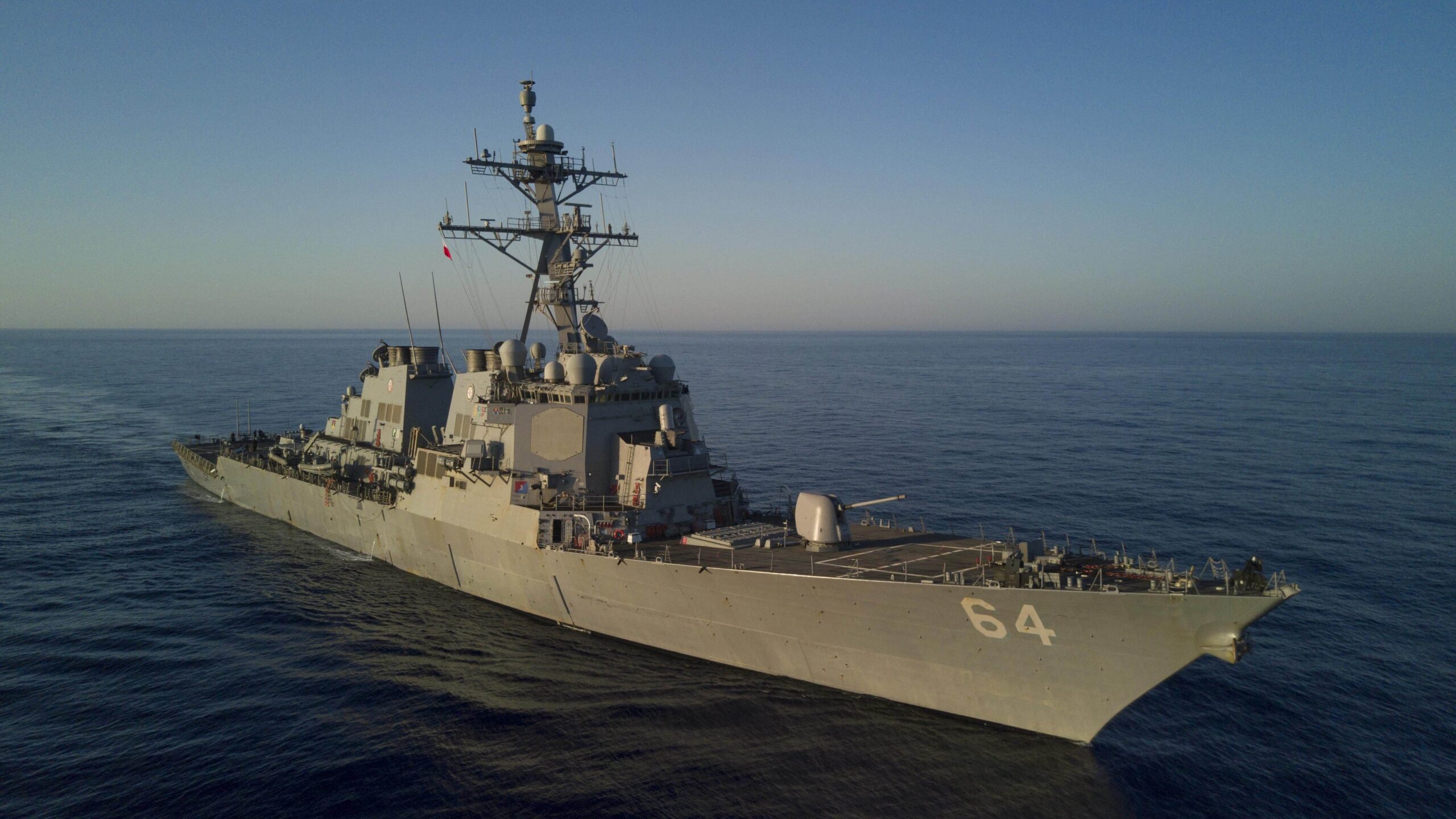

A U.S. Navy destroyer shot down multiple drones and cruise missiles off the coast of Yemen this week, several more than the Navy originally reported.
On Wednesday, the USS Carney, an Arleigh Burke-class guided-missile destroyer, opened fire on four cruise missiles and 15 airborne drones for nine hours, far longer than the military first said. Initially, the Pentagon said that the engagement only featured three missiles and “several” drones. CNN first reported on the longer, more complex engagement on Friday.
Per CNN, citing an American official familiar with the matter, the path and trajectory of the missiles had them en route to Israel. The missiles were fired by the Houthi rebels in Yemen, according to the Department of Defense, and would be the first attempt by any group in Yemen to strike at Israel in the aftermath of the Oct. 7 terror attacks by Hamas two weeks ago.
Subscribe to Task & Purpose Today. Get the latest military news and culture in your inbox daily.
The details come after two days of drone attacks on American installations. On Wednesday, separate drone attacks were launched on two U.S. bases in Iraq, one in the country’s west at the al-Asad Air Base and one at the al-Harir Air Base in Iraqi Kurdistan, a semi-autonomous part of the country. On Thursday, drones and rockets were launched at U.S. installations in Syria and Iraq. Two drones targeted the al-Tanf base in Syria, injuring some at the installation. One civilian contractor in western Iraq died indirectly, from a “cardiac episode” while taking shelter from the attack. The civilian’s nationality has not been identified.
Although the Pentagon said that the cruise missiles and drones were launched by the Houthis in Yemen, the other attacks in Iraq and Syria have not been attributed to any group. Some have claimed credit for it, but the Department of Defense has not identified any party as responsible.
The Houthis, which rebelled against former Yemeni dictator Ali Abdullah Saleh, seized the capital city of Sana’a in 2014, and then engaged in a fierce civil war against the Western-backed government. A ceasefire was reached last year, but the Houthis remain in conflict with a Saudi-led intervention force. The Houthis receive financial and material support from Iran, Saudi Arabia’s main regional rival.
Before the interception, the USS Carney entered the Red Sea via the Suez Canal, set to join other American ships in the region. The ship used SM-2 surface-to-air missiles to intercept the missiles and drones over the water.
On Thursday, before the details of the extent of the shootdowns were revealed, Pentagon spokesperson Brig. Gen. Pat Ryder said that the U.S. military was “prepared to utilize whenever necessary to protect our partners and our interests in this important region.”
Ryder made that comment in the context of the increased American military presence in the Middle East, meant to deter other nations or groups from getting involved in the war between Israel and Hamas. Since the Oct. 7 attacks, the Pentagon sent two different carrier strike groups, led by the USS Gerald R. Ford and the USS Dwight D. Eisenhower, to the eastern Mediterranean Sea, as well as additional aircraft.
Since the Oct. 7 attacks, the Lebanese paramilitary group Hezbollah has fired rockets into Israel, which in turn has fired artillery at launch sites. However, fighting has so far not spread farther than that in the region.
The latest on Task & Purpose
- Navy fires captain of guided-missile cruiser USS Lake Erie
- The M10 Booker Combat Vehicle is definitely a tank, says Gen. Abrams
- Why Navy SEALs wear a trident and other facts about life as a frogman
- A-10 Warthogs arrive, more U.S. forces coming amid Israel-Gaza fighting
- Army plans to cut ‘unnecessary maintenance’ on vehicles and weapons